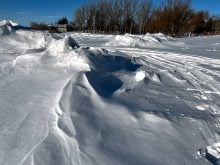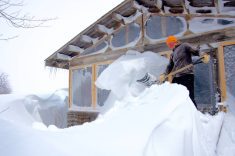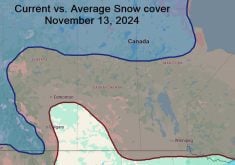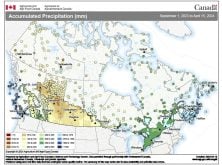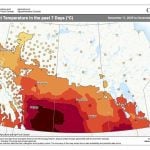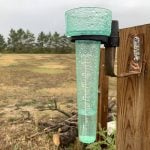Every few years I like to revisit the topic of the perfect Christmas holiday weather. In some years we worry whether we will see a white Christmas. This year, not so much.
As I look back over the years of writing weather articles around the holiday season, it seems when I approach this particular topic, the Prairies have often been dealing with warm dry weather and fears of a green or brown Christmas.
Well, this year that’s not a worry. All major centres report significant snow cover and the medium- to long-range forecasts call for average- to below-average temperatures, so snow should stick around.
Read Also

Farmer gift idea: How about a weather station?
The 2025 holiday season is looming, and a home weather station might make a great Christmas gift for farmers
Even though we should see a white Christmas, I think it’s appropriate to examine the question: What is perfect Christmas weather?
[FORECAST] Weather: Cold Christmas, then milder
For those who follow my articles, it’s probably no secret that my perfect Christmas weather is to have a nice big snowstorm that keeps everyone at home for a couple of days. The last time I wrote about this, we were in the middle of a pandemic, and we were all stuck alone at home. Maybe this year I’ll just wish that any big dump of snow waits until we have had our gatherings. Then we can get stuck at home for a day or two.
OK, what is the “perfect” Christmas weather? According to Environment Canada, perfect Christmas weather means there is already snow on the ground and at some time during Christmas day there is measurable snowfall. What are the chances of this happening somewhere across the Prairies?
Table 1 below shows the probability of having snow on the ground for Christmas, along with having snow fall during Christmas day. They break the data into two periods to show how our winters seem to be getting warmer with less snow.

I did some digging and was found more recent data since the last time I wrote about this topic. Not surprisingly, the numbers did not change that much.
It seems that if you want a white Christmas, Winnipeg is your best bet, followed closely by Saskatoon. If you want Environment Canada’s version of a perfect Christmas, then Regina is your best bet, but only expect it on average about once every three years or so.
If you do not really care, or want the opposite of a white Christmas, then Calgary is the place to be.
[RELATED] Understanding wind chill and the polar vortex
If your version of a perfect Christmas is to have record-breaking warm or even cold temperatures, then Table 2 at bottom is your list of the warmest, coldest and snowiest Christmas periods on record for two major centres in each of the three Prairie provinces.
These records are based on the full set of data from each of these cities, which means they go back to the late 1800s. While some might argue these old records are not valid, I think they are and should be included.
If you are looking for a place to go on the Prairies to experience a really warm Christmas, Calgary would be the place for you. While the other centres have seen some nice warm Christmases in the past, not one of the major centres comes close to Calgary’s record highs.
If you want some really cold weather during this period, then you could pick pretty much any place. They have all seen Christmases colder than -35, although Winnipeg comes out the winner here, with a bone chilling -47.8 C on Christmas Eve in 1879!
When you examine precipitation records for these three days, you’ll notice the Christmas period has been relatively dry and storm-free, but there are a couple of exceptions.
Winnipeg saw a heavy dump of 30.5 centimetres of snow on Boxing Day in 1916, but the record for biggest Christmas snowstorms goes to Edmonton.
Back in 1938, Edmonton recorded more than 25 cm of snow on Christmas Eve and then a further 18 cm on Christmas day, for a total of 43 cm of snow.
Whatever weather you end up with, I hope it is what you wanted. If not, remember the season and try to make the best of it.







